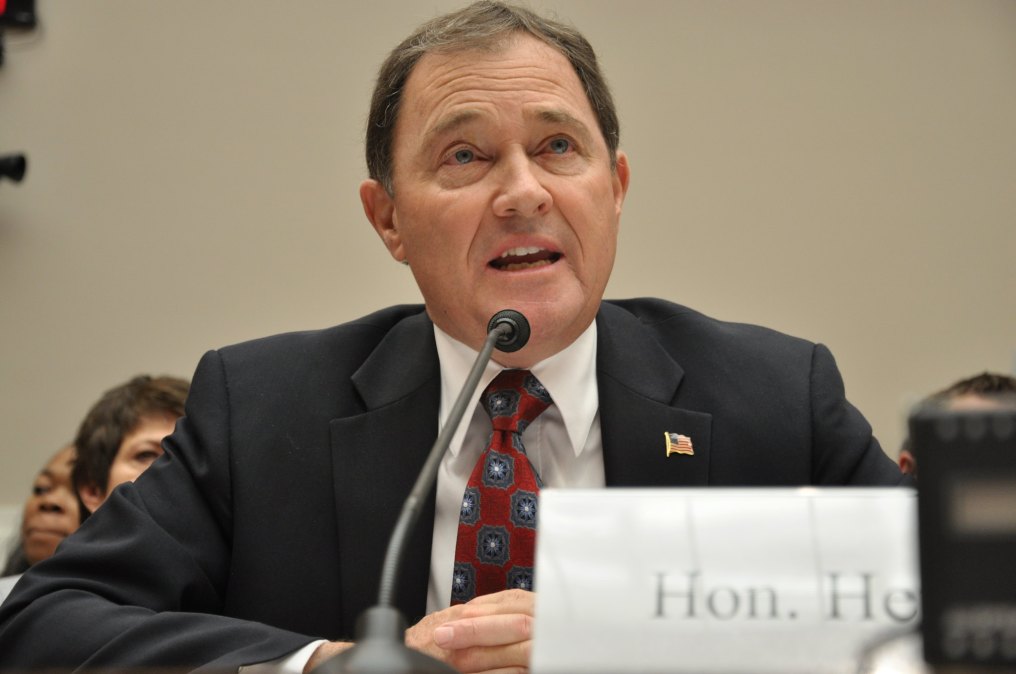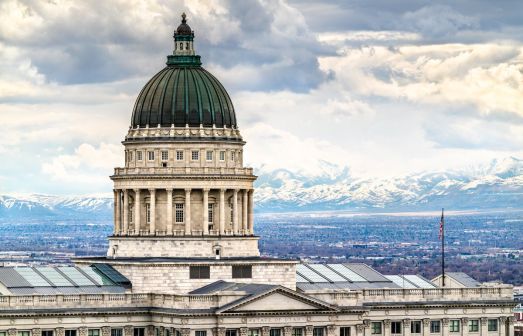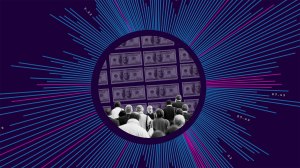In Utah, coronavirus decisions are fueled by real-time data

Just about any daily briefing by a governor on the COVID-19 pandemic begins with a rundown of the latest numbers of new confirmed cases, hospitalizations and fatalities. These data trends, public health officials say, are critical to determining when business closures can start to be relaxed and economic activity can resume.
A handful of states are using a dashboard-type platform by the Utah business-intelligence software firm Domo to supply their governors and their staffs with the latest statistics related to the novel coronavirus. And according to John Angus, the deputy director of the Utah Department of Technology Services, the dashboard — which contains a suite of apps gauging different metrics — has helped Gov. Gary Herbert track the virus’ spread and set benchmarks for when certain parts of the state’s economy can resume.
“In the beginning, we were putting numbers on coronavirus.utah.gov, but that didn’t spur anything to action” Angus said, referring to the state government’s public-facing site about the health crisis. “All it was was a case count. We needed better measures to attack this thing and make real solid decisions.”
Angus said the state is now using the dashboard to track four main measures that Herbert’s office is watching to determine when restrictive measures like mandatory telework and social distancing can be lifted: hospital bed usage rate, especially in intensive care units; the rate of newly confirmed infections; the number of tests being performed; and the source of exposures to the coronavirus.
While Herbert is one of just eight governors who have not implemented a formal shelter-in-place order, he has issued directives encouraging Utah residents to remain in their homes and effectively closing all non-essential businesses. (The state’s largest county, Salt Lake, is under a stay-at-home order.) Angus said the results of those measures have been visible on the dashboard, with the state’s hospitals now expected to not need more than 50 percent of beds to handle the projected surge in COVID-19 cases.
Data collected by the Domo platform is fed into a specialized app used by Herbert’s office to provide the governor and his staff with the latest statistics.
“It’s such a real-time environment, you have to tap into a lot of systems in government that before now never had a need to talk to each other, much less in real time,” said Domo chief strategy officer John Mellor. “If you’re a governor making hour-to-hour decisions, you want to get an alert about [personal protective equipment supplies, hospital utilization. Bringing it to singular command center is the zen of what we’re trying to do with states here.”
Mellor said along with Utah, the governors of Nebraska and Iowa are also currently using his company’s software to manage their responses to the pandemic.
In Utah, the dashboard is also integrated with a public-facing diagnostic survey that Utahns can use to determine if they should schedule an appointment for a COVID-19 test. Angus said he recently woke up one morning feeling ill and used the survey to schedule a test for himself — it came back negative a few days later. But he said the dashboard has been useful in helping health officials figure out what areas to focus on as Utah increases its testing capacity to 9,000 per day.
“Now we’re starting to see hotspots, whether they’re apartment buildings, the Navajo nation, homeless populations,” he said. The data, he added, helps determine if the state needs to send PPE shipments or mobile testing facilities.
The collection of data regarding how Utah residents contracted the coronavirus will also feed into the state’s contact-tracing efforts, Angus said. Officials are trying to determine if people became infected through the health care system, travel, a known contact or community spread. The goal, he said, is to get known contacts to account for at least 90 percent of all exposures. Utah is staffing up a virtual call center with 1,000 state workers to investigate how people became infected.
But ultimately, Angus said, it’s up to Herbert and his health advisers to determine how Utah will emerge from the health crisis.
“This is all informative,” he said. “We’re driving policy decisions, but we’re not letting the data tell us what to do. If we measure these core four — and soon we’ll bringing in economic indicators and social indicators — and get out of this initial urgent phase, then it’s still up to the decision makers.”






